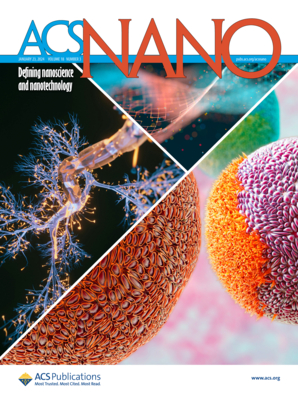Coupling Ultrafine Transition Metal and Rare Earth Oxide Nanocrystals toward Highly Active and Stable Catalysts for Lithium–Sulfur Batteries
IF 15.8
1区 材料科学
Q1 CHEMISTRY, MULTIDISCIPLINARY
引用次数: 0
Abstract
Electrocatalysts are extremely important for accelerating the redox reaction kinetics in lithium–sulfur (Li–S) batteries. As two kinds of competitive electrocatalysts, however, transition metals (TMs) usually react with sulfur species resulting in passivated surfaces, while stable rare earth oxides (REOs) exhibit low catalytic activity. Therefore, developing promising catalysts with long-term activity and stability is a crucial task. Herein, a TMs-REOs heterojunction catalyst consisting of N-doped carbon shell containing embedded ultrafine Gd2O3 and Co nanocrystals (named as Gd2O3/Co@NC) is elaborately designed and fabricated. Experimental and theoretical results reveal that the strong coupling between Co and Gd2O3 in a large number of heterojunctions endows the catalyst with moderate adsorption and satisfactory durability. Consequently, the cells assembled with a Gd2O3/Co@NC modified separator exhibit high rate capacity (628.0 mAh g–1 at 4C), cycling stability (504.2 mAh g–1 after 500 cycles at 2C), and sulfur utilization (4.8 mAh cm–2 under sulfur loading of 5.1 mg cm–2). This study highlights the invalidation mechanism of TMs in Li–S batteries and will inspire the design of advanced heterojunction catalysts through the coupling of TMs and REOs.

电催化剂对于加速锂-硫(Li-S)电池中的氧化还原反应动力学极为重要。然而,作为两种具有竞争性的电催化剂,过渡金属(TMs)通常会与硫物种发生反应,导致表面钝化,而稳定的稀土氧化物(REOs)则表现出较低的催化活性。因此,开发具有长期活性和稳定性的催化剂是一项至关重要的任务。在此,我们精心设计并制造了一种 TMs-REOs 异质结催化剂,该催化剂由含有嵌入式超细 Gd2O3 和 Co 纳米晶体的 N 掺杂碳壳组成(命名为 Gd2O3/Co@NC)。实验和理论结果表明,Co 和 Gd2O3 在大量异质结中的强耦合使催化剂具有适度的吸附性和令人满意的耐久性。因此,使用 Gd2O3/Co@NC 改性隔膜组装的电池表现出较高的速率容量(4℃ 时为 628.0 mAh g-1)、循环稳定性(2℃ 时循环 500 次后为 504.2 mAh g-1)和硫利用率(硫负荷为 5.1 mg cm-2 时为 4.8 mAh cm-2)。这项研究强调了 TMs 在锂-S 电池中的失效机制,并将启发人们通过 TMs 和 REOs 的耦合设计先进的异质结催化剂。
本文章由计算机程序翻译,如有差异,请以英文原文为准。
求助全文
约1分钟内获得全文
求助全文
来源期刊

ACS Nano
工程技术-材料科学:综合
CiteScore
26.00
自引率
4.10%
发文量
1627
审稿时长
1.7 months
期刊介绍:
ACS Nano, published monthly, serves as an international forum for comprehensive articles on nanoscience and nanotechnology research at the intersections of chemistry, biology, materials science, physics, and engineering. The journal fosters communication among scientists in these communities, facilitating collaboration, new research opportunities, and advancements through discoveries. ACS Nano covers synthesis, assembly, characterization, theory, and simulation of nanostructures, nanobiotechnology, nanofabrication, methods and tools for nanoscience and nanotechnology, and self- and directed-assembly. Alongside original research articles, it offers thorough reviews, perspectives on cutting-edge research, and discussions envisioning the future of nanoscience and nanotechnology.
 求助内容:
求助内容: 应助结果提醒方式:
应助结果提醒方式:


